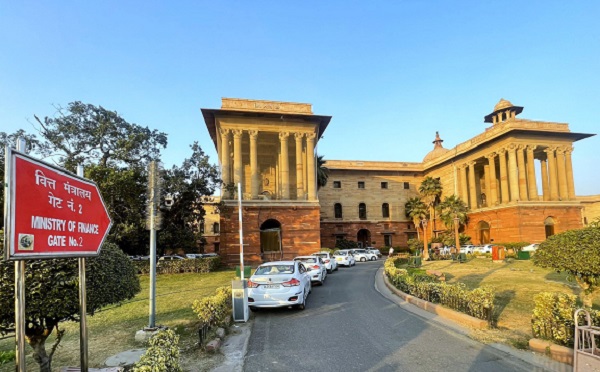.png)

Rajesh is an Assistant Professor IMS, Ghaziabad. His interests include monetary policy, financial markets, and macroeconomic frameworks. He writes with a monetarist’s lens.
June 24, 2025 at 2:45 AM IST
India’s fiscal architecture is undergoing a transformation, signalling a maturing approach to public finance. Union Budgets since 2021–22 have reflected a shift toward transparent fiscal consolidation, where the quality and composition of expenditure matter as much as the headline deficit number. Central to this transition is the rising prominence of capital expenditure, increasingly recognised as both a growth lever and a structural tool for macroeconomic stability.
India’s current fiscal path must be contextualised within the Fiscal Responsibility and Budget Management framework, enacted in 2003, which originally targeted a fiscal deficit of 3.0% of GDP. While this target was relaxed post-COVID, the fiscal deficit is projected to moderate to 4.4% of GDP in 2025-26 from a peak of 9.1% during the pandemic year. The government now aims to keep the fiscal deficit in each year until 2030-31 at levels that ensure Central Government debt follows a declining trajectory, targeting a debt-to-GDP level of about 50% by March 2031.
In this context, the rise in capital expenditure from 1.5% of GDP in 2017–18 to a projected 3.1% in 2025–26 suggests that consolidation is being pursued through expenditure rebalancing rather than through compression. During the same period, total expenditure of the government is projected to increase to 13.9% of GDP from 12.5%. Global multilateral institutions like the International Monetary Fund have long advocated for productive public investment during downturns, noting that infrastructure spending can enhance long-run potential output. India’s fiscal strategy aligns with these principles, reinforcing its credibility in global financial markets.
This also mirrors the Keynesian prescription that public investment should serve as a counter-cyclical tool in the face of insufficient private demand, as observed during the post-pandemic slowdown. With private investment constrained, the government’s choice to prioritise capital expenditure adheres to the Keynesian principle of demand management while simultaneously laying the foundation for long-term supply-side gains. From a neoclassical perspective, however, concerns may rise over the sustainability of persistent public borrowing, particularly if such investments do not generate commensurate productivity gains. The emphasis, therefore, must shift from merely raising capital expenditure to ensuring its efficient deployment.
Despite the headline increase, the pace of capital expenditure growth has moderated in recent years. Between 2020–21 and 2023–24, the compound annual growth rate of Central capital expenditure has decelerated, possibly due to institutional bottlenecks, land acquisition delays, and the limited absorptive capacity of implementing agencies. Moreover, while the government has eliminated most extra-budgetary financing mechanisms for food subsidy, as in the case of National Small Saving Fund loans to the Food Corporation of India, certain state-level and public sector-level liabilities still remain outside of the direct budget accounting framework. These merit closer scrutiny in future audits.
A key contradiction remains: maintaining fiscal credibility while sustaining high public investment, especially when private sector response remains uncertain. The Economic Survey has estimated the fiscal multiplier for capital expenditure at 2.4x, reinforcing the rationale for focusing on asset-building rather than direct transfers. However, the effectiveness of such spending hinges on its quality. The Ministry of Statistics' Infrastructure Statistics Report reveals that around 25% of large infrastructure projects face time overruns, and nearly 20% suffer from cost escalations.
Furthermore, capex has been disproportionately concentrated in the transport and energy sectors, with limited emphasis on health, education, and digital infrastructure. This sectoral skew reduces the potential for broad-based growth. Fiscal risks are also rising due to sovereign guarantees extended to public sector undertakings, and the rising cost of debt amidst a tightening global interest rate cycle.
The case for a Public Expenditure Quality Index is compelling. Drawing on the Public Expenditure and Financial Accountability framework, initiated by the European Commission, International Monetary Fund, World Bank, and the governments of France, Norway, Switzerland, and the UK, a PEQI for India could include indicators such as: Outcome-to-Spending Ratio, Project Delay Index, Cost Overrun Ratio, Asset Utilisation Rate, Maintenance vs Creation Ratio, and Sectoral Equity of Allocation. By shifting the fiscal debate from spending volumes to outcomes, PEQI would enable policymakers to assess spending effectiveness more holistically across both the central and state governments.
India’s capital expenditure-led fiscal strategy also faces several emerging fiscal risks. Politically-driven pressures in an election year could tilt budgets toward populist, revenue-based expenditure. Volatile global commodity prices, particularly crude oil, can increase subsidy and import bills. State government finances remain fragile, with off-budget borrowing still prevalent and debt service costs rising. External monetary tightening could push up sovereign borrowing costs and weaken foreign investor sentiment. Climate-related shocks may also necessitate unscheduled fiscal reallocation, potentially compromising deficit targets.
These challenges underscore the need for institutional safeguards: an independent Fiscal Council, full disclosure of all off-budget liabilities, and integrated central–state fiscal audits. Such reforms will help preserve fiscal transparency and credibility.
India’s fiscal posture is evolving. The government’s success in embedding capital expenditure within a transparent, rules-based framework demonstrates that fiscal consolidation and growth-supportive spending can be complementary. India is treading a fine line, drawing from Keynes while accounting for neoclassical trade-offs. Maintaining this path will require more than fiscal commitment. It will demand institutional reform, policy consistency, and a robust capacity to track and deliver outcomes.
* Views are personal.




